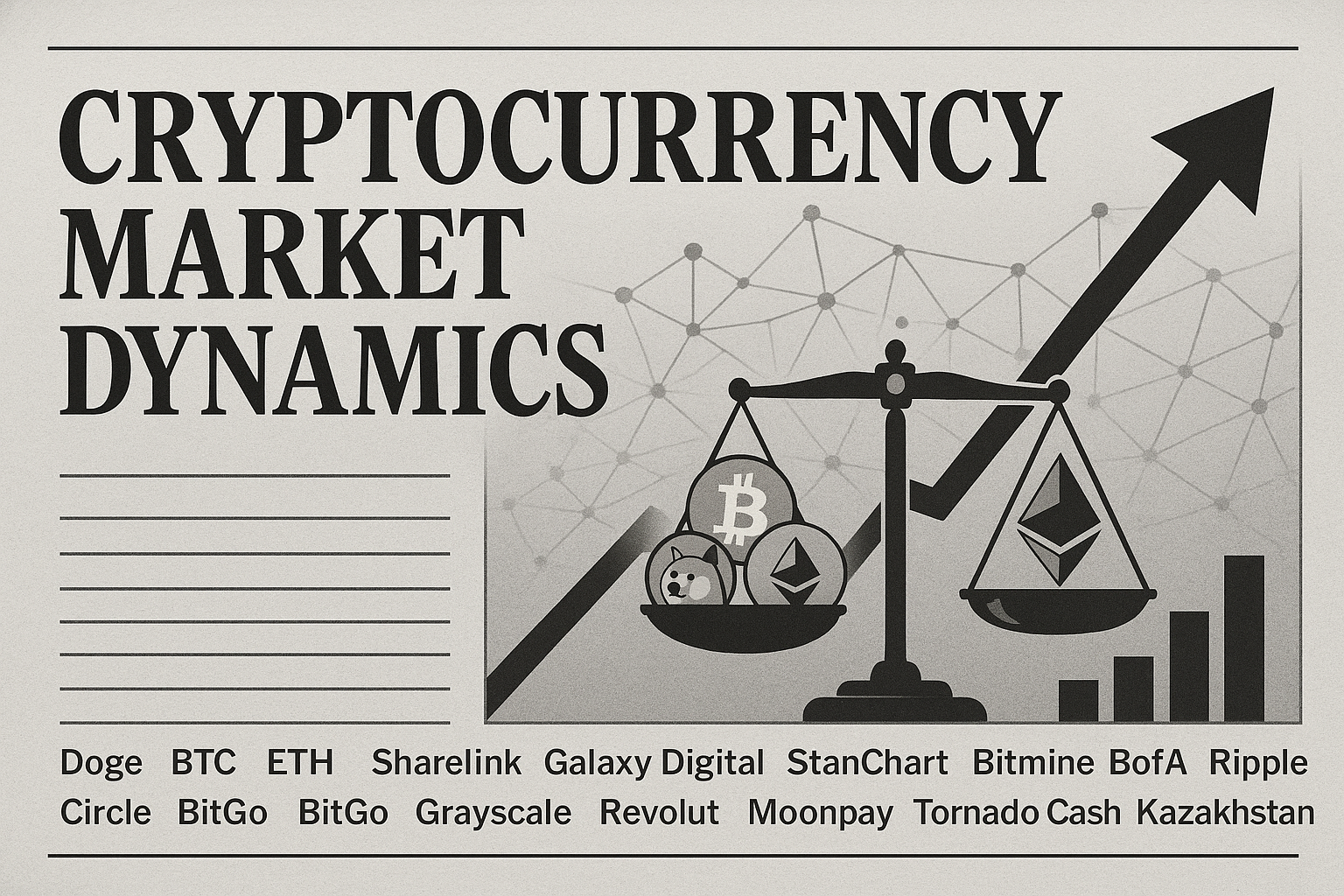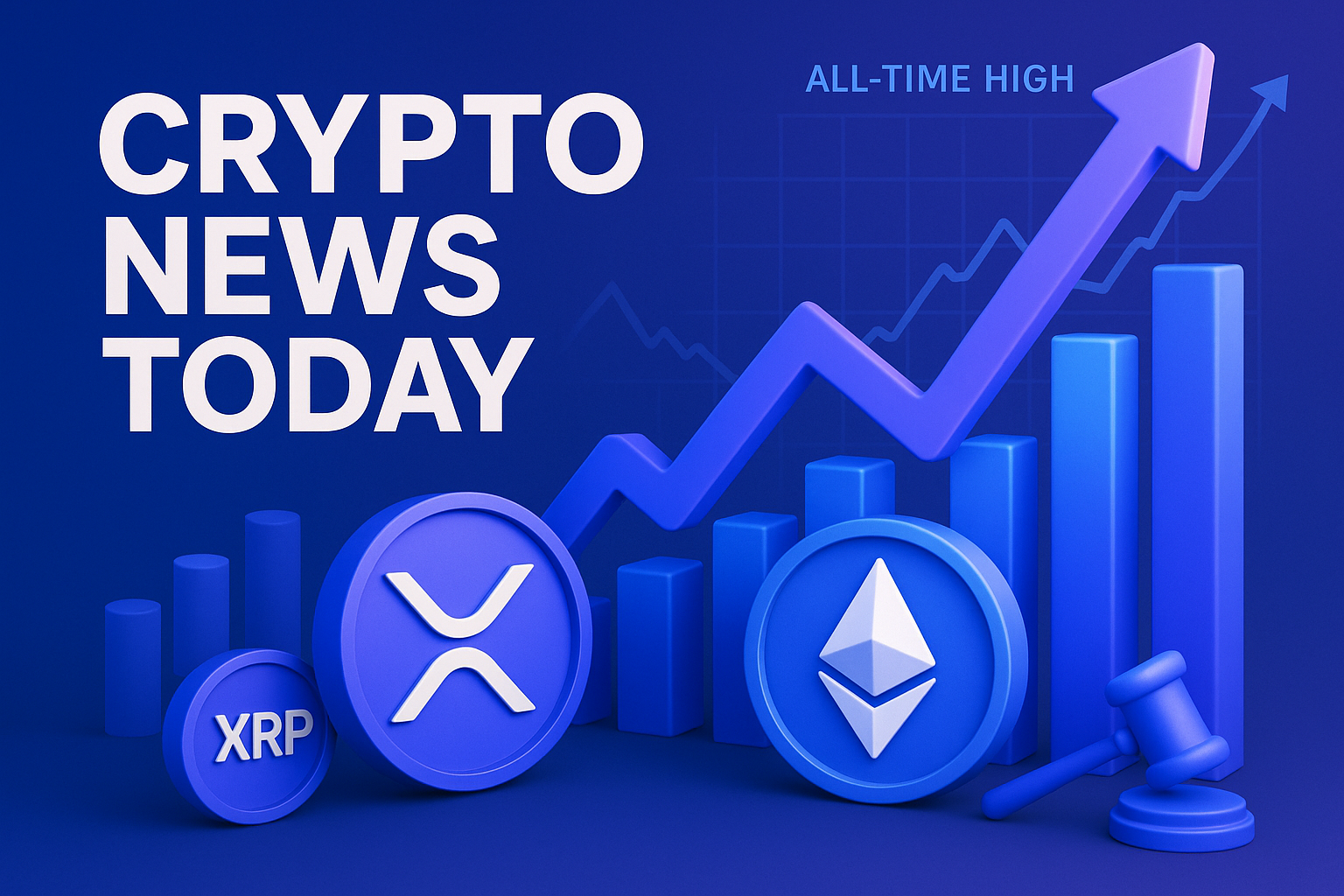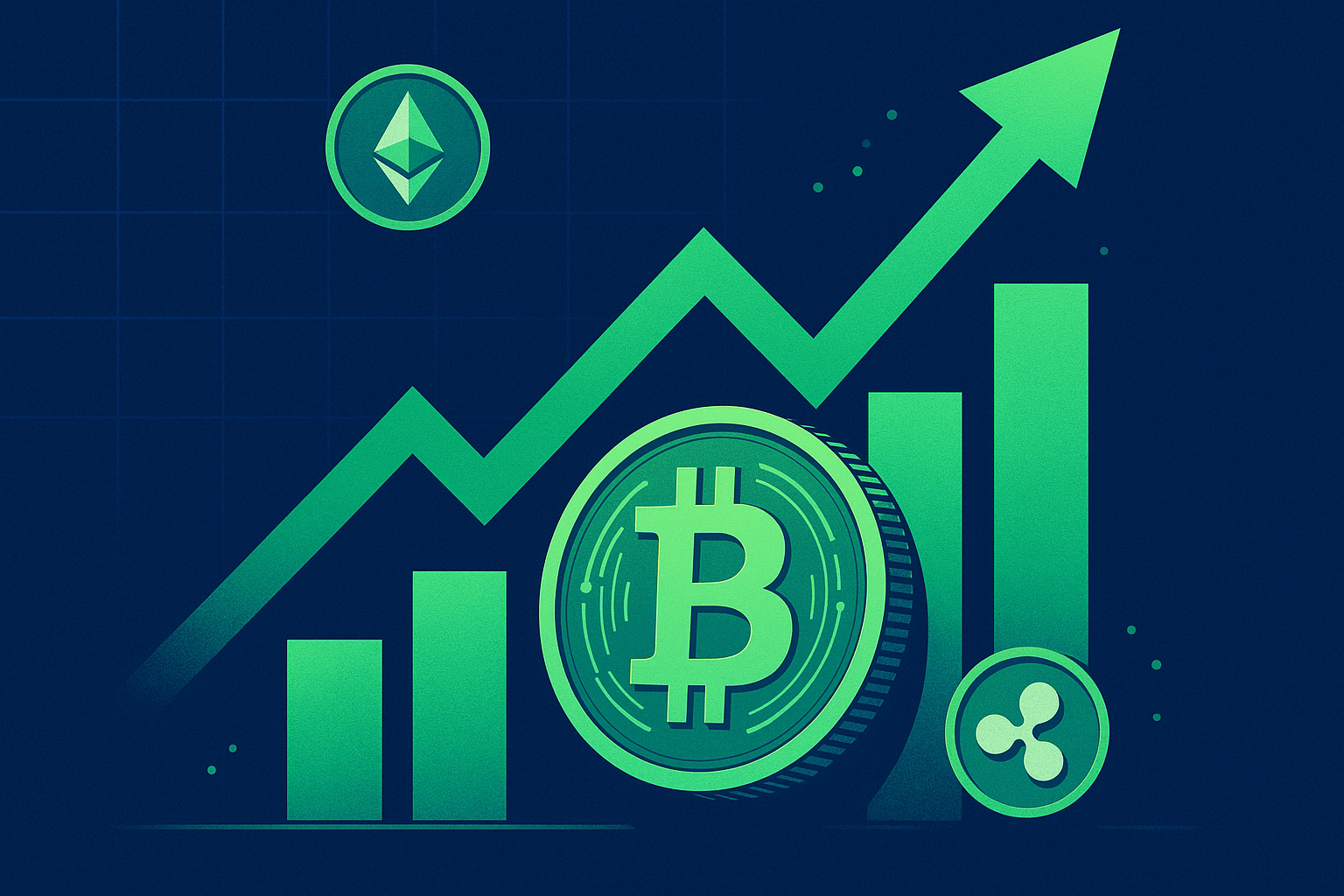I’ll start with an unpopular opinion: risk hasn’t been priced into equities for months, but it just crashed head-first into crypto overnight. The Nasdaq prints fresh all-time highs as if rate hikes never happened, yet my Telegram feeds are full of panic-selling emojis. If you’re feeling whiplash, welcome to another Tuesday in this industry.
Here’s What Actually Happened
Late last night, a single whale shuffled $2 billion in BTC onto Galaxy Digital’s OTC desk—glass-noodle thin liquidity at that hour, and the books buckled. Within minutes, DOGE, the perpetual retail barometer, puked double-digits. Bitcoin only slipped 3‒4 %, but the memecoin’s 14 % flush set the tone. When Doge leads majors down, I’ve learned to keep my trading view tabs open: 2017, 2021, same playbook.
Then the real headlines landed. Sharplink, the esports betting outfit that nobody outside DFS nerd-dom tracked six months ago, picked up another $73 million in ETH. That brings its treasury to roughly 640 k Ether, making it—by Arkham’s latest on-chain scrape—the largest institutional ETH holder on the planet. Let that sink in: a mid-cap wagering firm just passed the Grayscale Trust’s active stash.
If you’re scratching your head, you’re not alone. I messaged an ex-market-making buddy who now consults for Sharplink: “Why double down now?” His answer was classic gambler’s edge math—“probability of ETH flipping BTC in real-volume terms is mispriced.” Take that for what it’s worth.
Regulators Pulled the Handbrake—Sort Of
The Federal Reserve finally published its long-teased memo:
“State-chartered banks may custody and trade crypto, provided capital requirements mirror Basel III’s toughest buckets and exposures stay de-minimis relative to Tier-1.”Translation? Banks can touch the stuff, but every satoshi and wei will be risk-weighted like a CDO squared in ’08. Don’t underestimate how many compliance chiefs just sighed in relief—guardrails mean green lights for budget approvals.
Standard Chartered didn’t wait. By sunrise London time, they became the first global bank to offer spot BTC and ETH trading to institutional clients. Ten years ago I was begging my prime broker rep to even let me wire to Bitstamp; today, trad-fi is spinning up RFQs on LSEG terminals. Wild.
Money Is Moving Like It’s 2020 Again
Sequans Communications quietly scooped up $79 million in BTC reserves. Sure, that’s pocket change next to MicroStrategy, but the context matters: Sequans is an IoT chipmaker in a notoriously cash-hungry sector. When semiconductor CEOs park runway in Bitcoin, it tells me treasury committees now consider crypto balance sheet hedging a mainstream audit talking point.
Coinbase also crossed $1 billion in on-platform BTC-backed loans. I remember the 2018 bear, when you’d be lucky to collateralize 50 BTC without signing your firstborn to Genesis Trading. Today, startups are levered against orange coin to pay payroll.
ETH isn’t sitting idle either. Bitmine Immersion—yes, the hydro-cooling guys—yanked $500 million worth of Ether into cold storage. Meanwhile, Bank of America launched a weekly crypto research note and led with a bullish ETH call based on L2 transactional velocity. Funniest part? The report cited Dune dashboards the analysts clearly screenshotted at 2 a.m.—I recognize the default color palette.
Regulatory Chess Pieces on the Move
Ripple, Circle, and BitGo all filed applications for a U.S. national bank trust license. I think they smelled blood after Anchorage spent two years battling the OCC alone. A triumvirate approach gives regulators fewer excuses to stall—deny one, you have to explain identical denials for the others. Savvy.
Tornado Cash devs finally get their day in court today. The entire privacy coin community is on edge. If a jury equates open-source code with money laundering tools, every GitHub repo could end up litigated. I’m not exaggerating; my inbox has three different lawyers pitching “pre-emptive compliance audits” for DeFi protocols.
Kazakhstan leaked its plan to build sovereign crypto reserves. Insiders say they’ll hold 5 % of forex reserves in BTC and ETH by 2027. When a commodity-rich nation stacks sats, it’s usually a signal: they’re hedging against the very USD strength currently lifting U.S. equities. Ironic symmetry, no?
Why I’m Watching ETH More Than BTC Right Now
I’ve seen this movie. In 2013 and 2017, Bitcoin dominance spiked during macro fear, then gradually bled once institutions felt safe enough to chase yield. Today dominance sits near 55 %. Couple that with:
- Sharplink’s mega-wallet
- Standard Chartered onboarding ETH flows
- BofA’s research desk explicitly preferring Ether’s fee burn model
…and suddenly the flipping narrative feels less like Twitter copium and more like a medium-probability swing trade.
Sure, we have headwinds: Dencun upgrade delays, staking centralization FUD, Gary Gensler’s ongoing ETF cold shoulder. But let me ask: when has ETH ever rallied in a backdrop of universal agreement? The 2020 Merge trade printed 5× precisely because skeptics yelled “technical risk!” until the bell rang.
Little Nuggets Most People Missed
Kamino, a Solana yield protocol, just whitelisted xStocks as collateral. You can literally post tokenized Tesla shares and farm U.S. T-bill yields in the same vault. DeFi ate CeFi, now it’s nibbling on Robinhood.
Grayscale filed for an IPO. Yeah, an actual public listing, not a trust conversion. If approved, DCG gets liquidity without dumping GBTC. I’ve harped on Barry Silbert’s liquidity crunch for months; this is his escape hatch.
Revolut rolled out Pay with MoonPay across the UK and EEA. Tap-to-buy stablecoins at Pret a Manger? We’re basically there.
So, What Am I Doing With My Own Bags?
Not financial advice—my lawyer makes me say that—but I’m rotating. Trimmed a sliver of BTC into ETH during the post-Galaxy dip; dabbling in covered calls on DOGE because implied vols are ridiculous; and parking some dry powder for Tornado Cash verdict headline trades. I’m also eyeing Bitmine’s immersion rigs as a proxy play—miners that accumulate ETH tend to outperform when gas spikes.
Parting Thoughts From a Battle-Scarred OG
If this week taught me anything, it’s that assets pull back, but infrastructure rarely de-risks. Banks get clarity; corporates stack coins; devs keep shipping. Price can lag fundamentals longer than our nerves can stay calm, but the snapbacks are violent—ask anyone who shorted during the March 2020 wick.
The community chatter feels split. Younger traders call every red candle “game over,” veterans swap memes about buying fear. I don’t claim clairvoyance—just perspective. In 2015 I mined Ether on a gaming PC and flipped half of it for pizza. Eight years later, Sharplink’s CFO just did the same math I ignored, but with nine zeros.
Stay nimble, keep some powder dry, and don’t let all-time highs in TradFi lull you into thinking crypto winter is back. It’s more like early spring—muddy, messy, but seeds are already in the ground.



